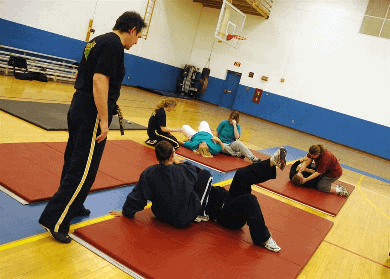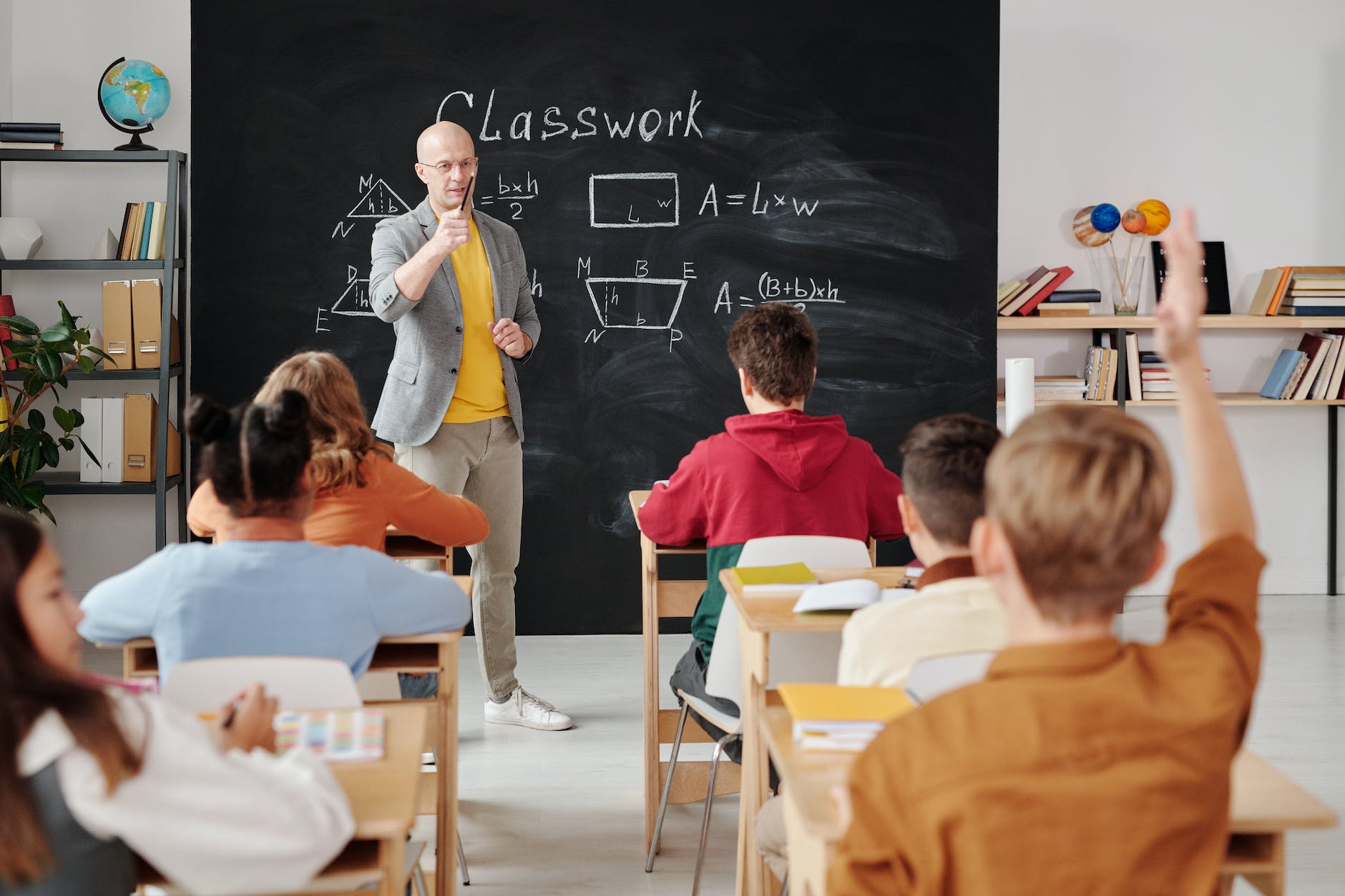Check Out the Benefits of Including a Self Defense Program in Middle School Physical Education

Original Source: Teaching Self-Defense to Middle School Students in Physical Education; Journal of Teaching in Physical Education
Bullying is an epidemic. It is widespread and cause for serious concern. Approximately one out of ten middle school students in the United States are bullied weekly. To minimize school violence, some schools have taken steps to raise awareness about bullying, by implementing programs that teach tolerance, empathy, build character, etc.
Related Article: How to End Bullying: 19 Tips for Parents and Teachers
However, since bullying can lead to physical violence, it is imperative that students know how to protect themselves. Students need to know that it is okay to use self-defense when they feel they are in danger of being hurt. There are ways students can defend themselves without having to fight.
Students often don’t know how to de-escalate a confrontation so they strike another individual. Students need to know that physical contact should only be used as a last resort, while at the same time having effective strategies under their belt to defend against an attacker.

There are several benefits of teaching self-defense in school. Students can learn to protect themselves. They can also establish self-awareness and awareness of potentially dangerous situations, improve self-discipline, develop self-confidence, improve fitness, develop physical skills and hands on experience, and increase communication skills. Additionally, integrating a self-defense program into physical education program is also becoming more common because the threats of crime in general are becoming more prevalent in our society. Still, many physical education programs don’t teach self-defense within their curriculum because there are educators and parents who fear that doing so will promote violence in schools. However, studies show that teaching students proper self-defense techniques can actually reduce school violence. Teachers, administrators and students can all benefit from learning the techniques in a self-defense program.
One of the most important things to learn when teaching self defense is to create a proper learning environment. It is very easy to lose control of middle school students while teaching a self defense class due to the range of maturity among students in this age group. Some students may act as though they already know what to do. Others may want to avoid confrontation all together and not want to participate. It is critical to make sure the students feel safe. “Students need to understand that the misuse of the skills taught in class can be harmful to others and will not be tolerated.”
Creating a safe comfortable environment presents challenges, because each class varies in student characteristics, ability level, chemistry among students, etc. Helping to make students feel safe and comfortable may happen easily with one group of students, and may take a lot of work with another.
Some students have background knowledge on self-defense, while others do not. Some may have experienced negative conflict in the past, so it is important to be sensitive and realistic about how to approach topics that may arise during self defense lessons. In order to create an environment that feels safe and comfortable, the teacher needs to set the tone for these types of discussions.
One way to set a comfortable tone is to let students guide the discussion. Some questions to ask include what is self-defense, when is self defense appropriate to use, why do we use self-defense when necessary. Presenting the lesson this way will allow the teacher to stress the importance of defending oneself when someone is inflicting harm on them and will help the students understand the difference between a verbal and physical confrontation. In any self-defense program, it is also important to teach students to always try to prevent a confrontation verbally, before it gets physical. There should also be an open discussion about tolerance and how it relates to bullying.
Additionally, students should be taught to be aware of dangers they may encounter in any environment. On the first day, it is imperative to discuss awareness of one’s surroundings. Students should be taught to think about answers to questions like who is around you, are you alone or with a group, if you are uncomfortable in an environment, what should you do. In today’s day and age students are often looking down at electronic devices and may also be wearing earphones. They are disconnected from their environment, and may not hear or see what is going on around them, making them an easy target.

By having awareness about their surroundings, they may be better able to remove themselves from a potentially threatening situation. Students at this age are also starting to be exposed to parties, drugs, alcohol and many other situations that may involve social interactions with their peers. It is important to make them aware of the potential dangers involved in these types of environments. These topics are often addressed in health class, so it may need to only be touched upon briefly as part of a self-defense program. It may be helpful to work with health teachers in your building to determine how much to delve into this topic.
It is important for the teacher to ensure that students have a clear understanding of the topics discussed above before self-defense techniques are introduced.
Once you have discussed what self-defense is used for, awareness of surroundings, potentially dangerous situations, etc. activities can be introduced to teach students different self-defense skills. Initially, students should focus on how to defend themselves against an attacker without a weapon, and can progress to more advanced moves (how to defend against an attacker with a weapon) as they advance in grade level and build a foundation of basic self-defense techniques.
When teaching self-defense, the teacher should discuss the importance of balance, not panicking, the element of surprise, and how this awareness can assist when utilizing the learned skills. Attackers generally chooses victims who they feel are at a disadvantage. This is why the element of surprise (catching the attacker by surprise with self defense moves) can be very helpful to the target. Students should also understand that when they need to use self-defense against a real-life attacker, they should immediately inform a trusted adult (parent/teacher) about the situation as soon as they can.
This article is based off an article found in the Journal of Teaching in Physical Education · January 2014 entitled Teaching Self-Defense to Middle School Students in Physical Education.
I decided to share it with you because I believe it is important for students to feel confident that they can stand up to someone who may try to put them in a compromising position. No student should have to be afraid at school. When students are confident in their abilities to defend themselves, they are less likely to be targets. I think there is real value in teaching students self-defense. What are your thoughts on this topic?
The original article lists three (of many) possible attacks that could happen at school (i.e., being pinned against a wall, being pushed and being pulled) and provides steps for self-defense in each scenario. These moves should only be taught by a teacher trained in self defense techniques. See the original article for these techniques.
Conclusion
If self defense is taught and used correctly, it can help students to know what to do in harmful situations, and allow them to feel empowered, so they will not be victims who are easily taken advantage of. Regular participation in self-defense and martial arts classes can develop a greater sense of self-control, self-esteem, and individual growth. By teaching self-defense in a physical education setting, teachers can provide a safe environment to practice these skills. They are able to properly inform students about technique, use, potential dangers, and related factors.
Physical education teachers should research the art of self defense if they want to include these types of lessons in their curriculum. They would benefit from becoming certified to teach self-defense and could also try to enlist guest speakers trained in self-defense or martial arts instructors to assist in teaching the course. The physical education teacher needs to be comfortable and competent to add self defense to their curriculum. While introducing these skills may be looked at as taking a risk, self defense is a lifelong skill that can help to raise awareness, reduce the number of victims of bullying, and prevent a threatening situation from escalating into something more serious.
Video Presentation of This Article!
https://youtu.be/6_wEILKowTc
Thank you for visiting educationandbehavior.com. We provide free academic, behavioral, and social-emotional support for all children! Browse our topics from the navigation bar above! Receive our updates on Facebook!
Please share this information with others!

Rachel Wise is the author and founder of Education and Behavior. Rachel created Education and Behavior in 2014 for adults to have an easy way to access research-based information to support children in the areas of learning, behavior, and social-emotional development. As a survivor of abuse, neglect, and bullying, Rachel slipped through the cracks of her school and community. Education and Behavior hopes to play a role in preventing that from happening to other children. Rachel is also the author of Building Confidence and Improving Behavior in Children: A Guide for Parents and Teachers.
“Children do best when there is consistency within and across settings (i.e., home, school, community). Education and Behavior allows us to maintain that consistency.”







